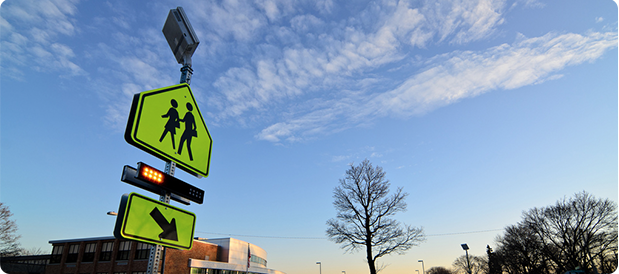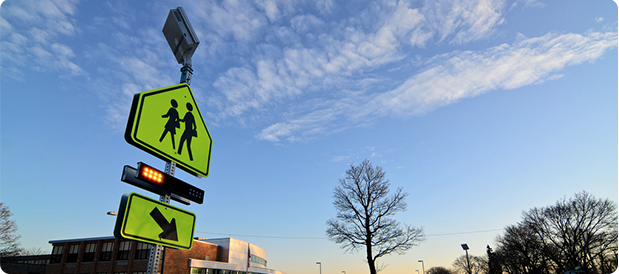Carmanah Technologies wrote the following for the IMSA Journal
Rectangular Rapid Flashing Beacons (RRFBs) are becoming an important part of the toolkit and a top choice for transportation professionals looking to improve vehicle yields rates, pedestrian service levels, and multi-modal transportation access at uncontrolled, marked crossings. As demand for solar RRFBs continues to grow, it is important to consider the key factors that ensure reliable performance when specifying systems for projects and bids. Solar-powered RRFBs offer a cost-effective, easy-to-install solution and provide a number of benefits to AC powered units. However, specifications sometimes focus on certain materials and size, instead of specifying how many pedestrian actuations the system must support each day (referred to as “operating capacity”). When specifying Solar Rectangular Rapid Flashing Beacons, an emphasis needs to be placed on operating capacity instead of prescribing solar panel wattage and battery size. Additionally, site-specific shading needs to be considered.

RRFBs are becoming a widely-recognized solution for increasing driver compliance and improving safety at crossings where existing signs and markings have been insufficient. Proven performance, as shown through research conducted by state and federal authorities,m has these high-intensity crosswalk lights gaining attention. The United States Department of Transportation Federal Highway Administration (FHWA) has proven RRFBs to be an extremely effective device for driver yield compliance (between 72 and 96 percent) at uncontrolled marked crosswalks. (see the FHWA Publication No. FHWA-HRT-10-043 “Effects of Yellow Rectangular Rapid-Flashing Beacons on Yielding at Multilane Uncontrolled Crosswalks“.)
Read the full article:
Download this article
